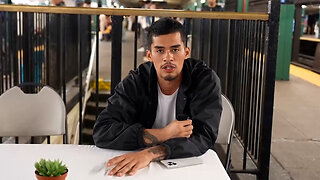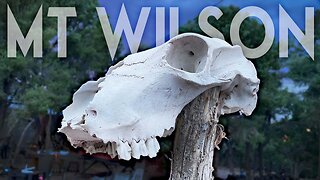Preparing And Hanging Out Food For Rescued Flying Foxes In Jeannie's Bat Aviary - Behind The Scenes
Continuing on from my previous video of a tour of Jeannie's bat aviary, this video shows you the behind-the-scenes story of what is involved in preparing food for rescued flying foxes in care.
A weaned baby bat may eat around 200-230gms of fruit a day, with an adult getting 300-350gms. This means a lot of buying fruit, fruit chopping into small pieces, especially for the babies, and then placing it around the aviary.
Yes, there is an art to the placement of the food. It has to be scattered around giving everyone a chance to get to it. Or bullies may take over a certain food container and prevent others from getting to it. Yes, its true, bats are closely related to humans, in so many ways, not just our DNA!
FLYG FOX FOOD:
Most people think bats or flying foxes only eat our backyard fruit or fruit in our commercial orchards. But they don't.
In fact, their natural food is pollen and nectar from over 100 species of native trees and vines.
They can eat the flowers and sometimes leaves of eucalypt, lily pilly, paperbark, and turpentine trees.
When native foods are scarce, particularly during drought, the bats may supplement this diet by eating fruit from introduced plants found in gardens, orchards, parks, and streetscaping.
FUNDRAISG DONATIONS:
Should you like to help with their care, then make a difference and consider donating to your local wildlife group. Even just $1 can make a big difference!
And if you are a resident of Southeast Queensland, then you could use the link: https://batrescue.org.au/donate/
All donations over $2 are fully tax-deductible.
For more videos like this, check out our playlist: "Discover Bats": https://www.youtube.com/playlist?list=PLQrN5eNL5RhOIhD8Erg2cFyPrENv1ct-8
ABOUT IRENE IACSON:
Irene Isaacson (ex-iFotoTravel) is a passionate travel and wildlife photographer. Whilst traveling over 1 million miles and across many continents over the last 10-15 years, she has honed her photography, videography, and photojournalism skills.
With a particular love of experiencing all manner of wildlife interactions, Irene is an active volunteer and member of many global wildlife organizations.
These include Not-For-Profit organizations, many of which benefit from regular donations from her photography business profits.
She shares her adventures in the hope to raise awareness of conservation and environmental issues, using her platform to inspire, support, and enact change.
Irene says: “We are all stewards of our planet. Between us all, we can help secure the future of our world and the plants and animals within it. It only needs to start with one person…”
Say Hi on Socials:
• Instagram: https://www.instagram.com/ireneisaacsonphotography
• Facebook: https://www.facebook.com/ireneisaacsonphotography
• Pinterest: https://www.pinterest.com.au/ireneisaacsonphotography
For more information:
• Email: ireneisaacsonphotography@gmail.com
• Mobile: +61 407 126 750
• Website: www.ireneisaacsonphotography.com
• For some of Irene's Travel Articles - Travel2Next: www.travel2next.com/author/irene-isaacson
For YouTube Creators – if you are not using TubeBuddy when creating your YouTube content, then click below to find out more information about the software. I find it invaluable and I think you will too:
https://www.Tubebuddy.com/ireneisaacsonphotography
#ireneisaacsonphotography #bataviary #feedingbats
-
 2:57:13
2:57:13
SNEAKO
5 hours ago"Who Do You Hate the Most?" - One Minute Podcast
27.1K5 -
 LIVE
LIVE
SonnyFaz
1 hour agoDr. Shiva x Sonny IRL
991 watching -
 4:28:03
4:28:03
LumpyPotatoX2
7 hours agoSub-Sunday on Rumble - #RumbleTakeover
26.9K4 -
 26:04
26:04
iamLucid
1 day agoVideo Game Piracy is Unstoppable
53.6K60 -
 16:31
16:31
GeekyNerdyTechy
1 day agoZHIYUN Fiveray M20C Combo Light Review & Tutorial
76.4K6 -
 8:29
8:29
ParisDemers
1 day agoThe Kratos/God Of War Workout Program (His Real-Life Training)
59.6K4 -
 16:14
16:14
CarlCrusher
22 hours agoSkinwalker's Evil Twin - Beyond Skinwalker Ranch Behind the Scenes Season 1 ep 2
61.9K9 -
 58:35
58:35
Crime Circus
1 day agoMackenzie Shirilla KlDNAPPED!! True Crime Documentary!
69.3K24 -
 8:03
8:03
Bearing
1 day agoE-Safety Karen INVENTS Elon Musk HARASSMENT While LEAKING Private Details!
79.7K107 -
 17:16
17:16
Clownfish TV
1 day agoMedia Melting Down Over Mainstream Media Meltdown...
102K82